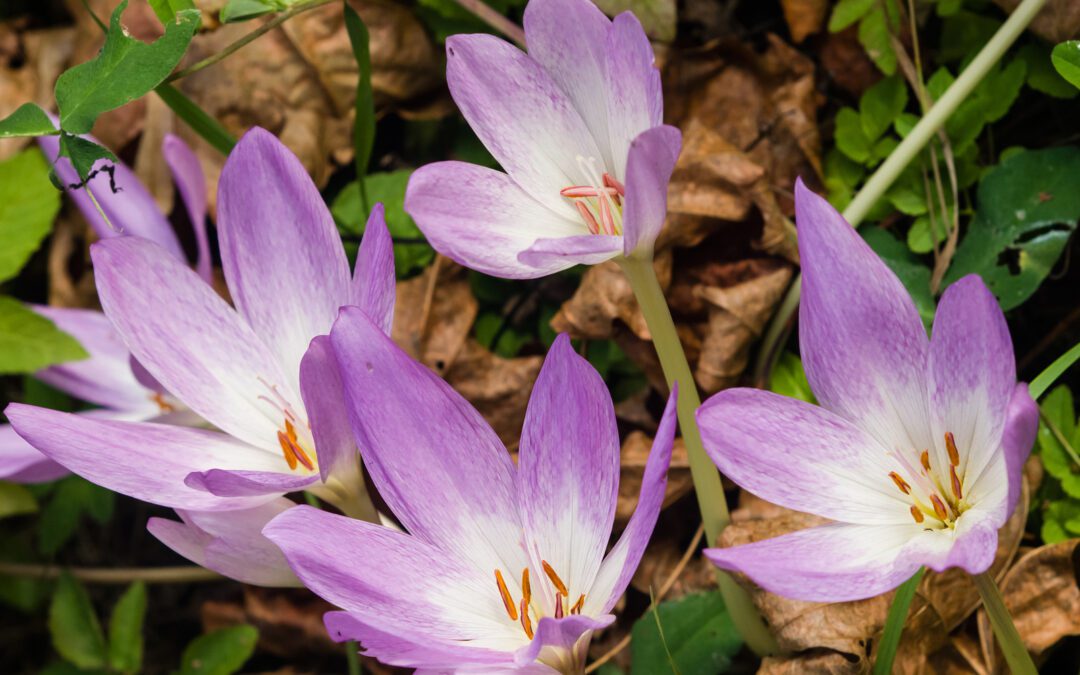Seesawing temperatures are one clue that summer is on the wane. Long-range weather forecasters predict that we can expect more moderate temperatures this weekend through the end of the month, giving us lots of time to plant some fall veg and late blooming annuals. If you didn’t plant a family veg garden this spring, you can try a few things this fall. Salad greens, snow peas and radishes are just a few ideas. Check the seed packets. You’ll want varieties that mature in 60 days or less. We’ve met some kids that are much more open to trying vegetables that they’ve helped to grow themselves! And we just checked in an order of new, packed for 2024 garden seeds from Botanical Interests.
It is a too early to plant, or even think about, spring blooming bulbs like Tulips and Daffodils, but the Garden Center will soon be home to autumn crocus and iris rhizomes. Autumn Crocus should be in later this month and you can plant as soon as you get them home, and enjoy their spectacular blossoms yet this year, as well as a surprise for many autumns to come. Though mostly in shades of orchid pink, there is a white flowering variety available.
Iris rhizomes can be planted soon and new rhizomes are expected by the end of the month. Be sure to choose a sunny, well-drained spot and plant them close to the surface. German Iris especially are sensitive to soil cover. Plant them shallow and be careful when mulching the area. Now is also the time to divide the Iris already in your garden. Dig them up carefully and trim the fans to about 6-inches, throwing away any sections that appear damaged. Cut the rhizomes into sections, making sure that each section includes a fan. Let the cut ends cure for a few days and re-plant. A bit of bulb fertilizer would be appreciated and will spur new root development.
Look for many of those spring blooming bulbs after Labor Day. This group includes Allium and Surprise Lilies, as well as the more common Daffodils and Tulips. Once purchased, store your bulbs in a dry, airy place that doesn’t get too warm. Make sure they aren’t in sealed plastic bags that can retain too much moisture, or piled too high in a grocery bag. Lay out the individual bulb bags in a tray or on a shelf and they’ll keep very nicely until early October when the soil temperatures will have moderated enough to spur root growth, but prevent leaves from sprouting.
When the temperatures do begin to tumble, be on the lookout for yellowing leaves on your Caladium, Dahlias, Begonias and any other summer flowering bulbs that are in the garden or in containers. If you want to save them for next year, you’ll need to get them out of the soil by the first frost. Be sure to dig carefully though, as many will have increased in size and may even have formed new bulblets. Leave them in a warm, airy spot for a couple of days and then remove the wilted foliage, carefully brushing off any excess soil. Place them in low, labeled boxes or flats filled with peat moss and store in a cool, dry and dark location.
This is the time to start the dormancy process for last holiday’s Amaryllis if you want flowers for Christmas. Remove the plants from their pots, cutting back the summer foliage and brushing the soil from the roots. Store the bulbs in a cool, dry and dark place for the next twelve weeks. You’ll be able to re-pot them before Thanksgiving and get blossoms for the winter holidays.
If you are planning to force bulbs for early spring, you should pot them soon after they are purchased. Most varieties need at least twelve weeks of chilling temperatures to initiate blooms. For the best results, store the planted containers in a place where the temperature is 35-45 F. A cooler in a garage where the temperature doesn’t fluctuate too wildly is an ideal place.

